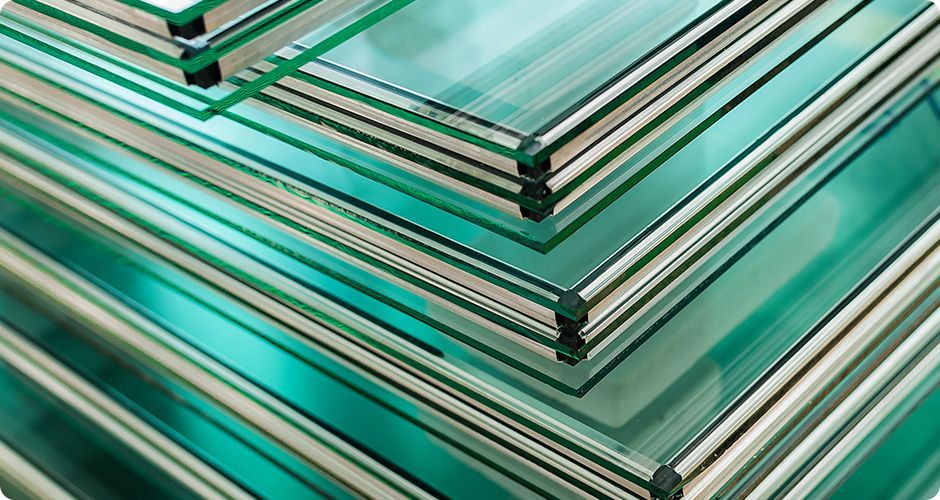You may think that the number of glass types is rather limited. But in reality it is almost unlimited! In fact, there are only a few types of glass. This basic glass is also called float glass. The float glass can then be processed and treated in all kinds of ways, allowing you to make an infinite range of glass types and compositions. From a simple pane for the barn door to explosion-resistant glass. Even complete stairs and bridges are made of glass. And another nice example; the floor of the Eiffel Tower also consists partly of glass. The possibilities are endless, but we're going to try to clarify a bit for you...
Which basic types of glass are there?
In essence, there are four types of glass that are traded on large platforms and transported to glass processing companies such as coaters, insulating glass factories, hard glass production companies and glass (wholesale) traders. These are:
Normal clear glass
Extra clear glass
Colored/tinted glass
Patterned glass
Normal clear glass
The basic flat glass is also called float glass. This is standard clear glass which is used for many purposes. It is the basis for insulating glass, laminated glass and tempered glass, among other things. And of course it is also used as untempered window glass. In the flat glass industry these are the usual thicknesses that are available as standard: 2, 3, 4, 5, 6, 8, 10, 12, 15 and 19 mm. Most types up to 12 mm are often in stock. The other thicknesses may have a longer delivery time.
Extra clear glas
In addition to the standard clear glass, there is also EXTRA clear glass, often referred to as "diamond glass" or "crystal glass". By using raw materials with a lower iron content, the greenish glow that you have with standard basic glass disappears. This is particularly important when a very clear view is required. This type of glass is a good base for making mirrors or when a layer of paint is applied to it. This is available in 4, 6, 8, 10, 12, 15 and 19 mm. Here too, the thickness up to and including 12 mm is often in stock.
Colored/tinted glass
Colored glass in the mass is comparable to the standard base glass. The only difference is the color. During the production process, raw materials are added in the glass furnace to give the glass a certain color. The thicker the glass, the better the color comes out. As an example: a 12 mm gray glass plate will be much darker than a 4 mm gray glass plate. There is more mass, so more color. The colors grey, bronze (brown), green and black (SGG Ultra Grey) are readily available and often in stock in various thicknesses.
Patterned glass
When the glass is pulled out of the oven, it passes through a number of rollers that apply a motif in the glass. These motifs are very diverse and can be applied in all three of the above types of glass. Some types are only available in 4 or 6 mm, others are also available in 8 and 10 mm thickness. There are also colored patterned glass types, but not everything is produced in every color. Because over the years the motifs change along with the trends, some motifs and colors are no longer made. The replacement market is then very dependent on the supply of old stocks, which means that prices can rise enormously. And because not every manufacturer has access to every type of glass, this sometimes drives up the price and delivery time.

 Nederlands
Nederlands
